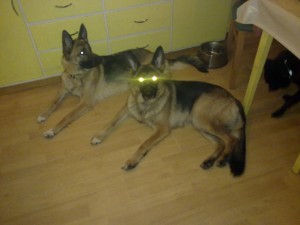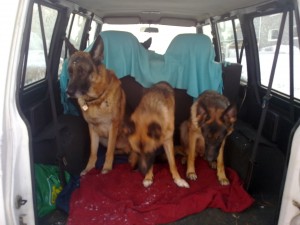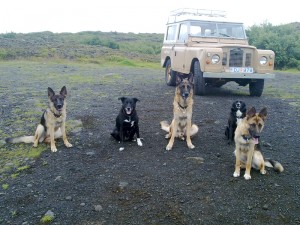Societies of the human kind are interesting, varied, and usually predictable. Of course the Chinese society is different from the Cuban and so forth. But some things are common in all of them. Friendship is always valued and love is desired everywhere. Deceit is usually despised and criminals more than not put away for a while.
Tradition is something the society has agreed upon for a long time, to the point of it becoming a kind of dogma. Fashion on the other hand is something which could over time become a tradition.
For decades, or even centuries, the Icelandic tradition demanded lamb for dinner on Christmas Eve. In the late seventies and early eighties it became fashionable to have pork instead. Thirtee years later the pork has become a tradition and those preferring lamb belong to the old tradition.
Dog training and dog culture is dependent on the same attitudes. For example it has been a national sport to despise and frown upon dogs in general. Thirty years ago it was not common to keep dogs in towns or the city. People who kept dogs where usually considered a little weird.
Today on the other hand it’s quite common that families who are able to will get a dog simply for their children to learn a little bit about animals. Dogs are alos cuddly little animals like living teddy bears. This is also interesting becaus thirty years ago the medium sized dogs like Border Collie or Icelandic Sheepdog was more common. Now it’s a different story: Pug, Chihuahua, Papillon and many other small breeds have grown in the community and are to be found anywhere.
As training goes we can see similar changes in attitude. Three decades ago you simply kicked the dog if it didn’t behave and no-one considered to reward good behaviour or encourage it. Just kick the dog until it figures out on it’s own what you expect from it. Today we don’t.
Today we offer treats, clicks and soft sounds to reward and re-inforce good behaviour and voe to one who punishes a dog. We teach them how to walk at our side or to sit and roll over. We have fun teaching them to shake hands or jump on top of chairs and sofas. Some people train agility and some people go even further. Almost everyone keeping or training dogs have one dog at ther home and at the most two. When people keep two dogs it is usually to allow them to keep each other company or to have a younger one already in place when the older one passes away.
It isn’t common for people to keep many dogs – like I do – and in fact I won’t recommend it. Not that it is such hard work, as many would believe. In fact you cannot keep a pack of three or more dogs with current training methods. But keeping five dogs for me is almost the same work as keeping two.
That being said it isn’t entirely correct, depending on your ambition as dog trainer. If you have three or more dogs and you simply take them for walks or release them from time to time in the outdoors, you won’t have big problems, not at first. If you pay attention you’ll slowly discover that one of them will automatically resume responsibility as the pack leader, with you being his.
In a dog’s view a pack leader isn’t the one pulling the strings or calling the shots. It’s the one the others turn to for stability and leadership. A dog expects someone to assume that role and it comes automatically to them. They won’t cast a vote and they won’t have fight or quarrels. The dog – or the bitch – with the biggest and coolest balls will be the one the others trust explicitly and they’ll follow her. If you don’t assume that stance, you won’t be the leader and you’ll slowly see the signs.
The positive re-inforcement attitudes of todays teachers in dog-training will teach you how to draw the best from each dog, but they won’t teach you the attitude of the pack leader. Except perhaps people like Cesar Millan who is under attack from nearly every professional trainer in public home-dog schools today for being to harsh to dogs. Being to harsh isn’t really the case, as should be evident to anyone who has watched his shows with objectivity.
Dogs who live in a pack do not use positive re-inforcement individually. They are brute animals to one another when it comes to the pecking order and when they teach each other how to behave. Their signals in play and in reprimand are not always clear to us humans but always clear among them. Someone who wishes to have a pack and goes on to keep one will realize this slowly and step by step learn the signals. This is something Mr. Millan does and has been doing for quite a while and it takes one with similar experience to notice the difference. Also it is good to keep in mind that many of his shows focus on taking troubled dogs and forcing them – the doggy way – into calm subservience.
As mentioned before, you can keep a pack and walk them as usual. You won’t have many problems and if you’ve taught the oldest ones all the tricks the younger ones will see them and absorb them. If you also refrain from allowing the older ones to assume responsibility for the training and upbringing of the younger ones they will all obey you without any problems. In order to achieve this you must take each animal twice or three times a week for a walk on their own with you: Doing that they’ll bond with you and automatically magnetize their attention span and subservience to you. Yes it is a little bit more work than keeping two dogs but worth it.
From that ground you can easily move on to SAR training, Agility, substance searching and even schutzhund. The last one requiring that you keep a firm leash on the whole pack.



